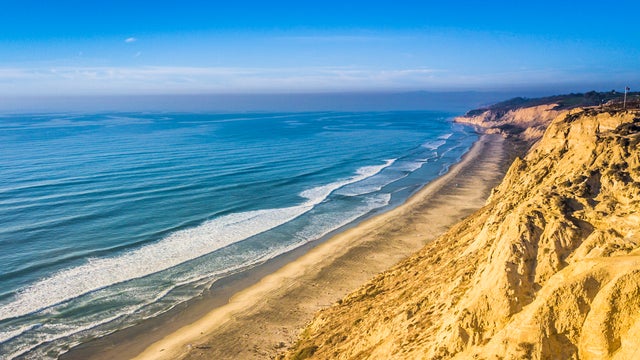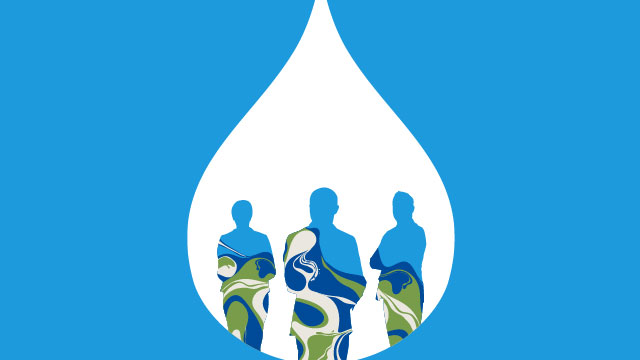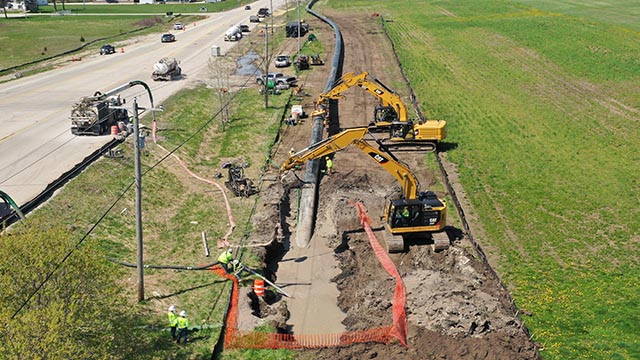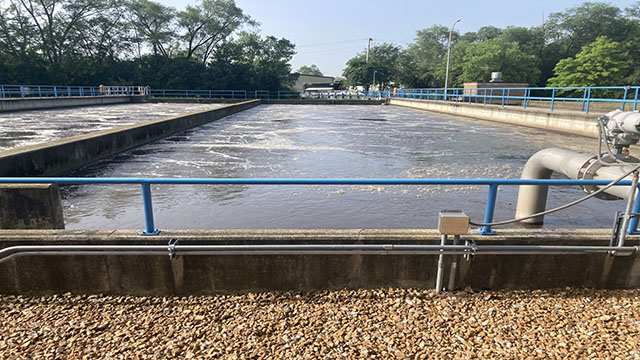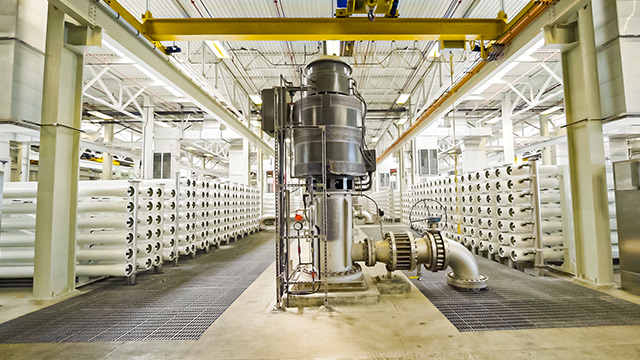Alternative water supply (AWS) is taking on a more prominent role in portfolios particularly in coastal U.S. regions that face unique water challenges such as drought and seawater intrusion. California, Florida and Texas are moving forward with projects to develop and maximize alternative water supplies to meet demand and achieve sustainability and resilience goals.
Desalination Project Barriers
Despite its popularity in regions like the Gulf Cooperation Council (GCC), Asia Pacific and South America, desalination projects have been slow to gain momentum in the United States. Though desalination seems like the most logical alternative water supply option for seaside communities, there has been a general lack of support stemming from permitting delays and high upfront costs compared to water reuse options. Survey results from the 2018 Strategic Directions: Water Industry Report echo this sentiment, with 58 percent of respondents expressing that desalination is very expensive compared to other sources of alternative water supply (Figure 1).
Figure 1. Which of the following statements BEST represents your community’s overall impression of desalination and water reuse?

Within the U.S., a lack of experience with desalination processes means that these projects also tend to be viewed as complex to build, operate, finance and ultimately, manage. Project timelines represent a major perception barrier. For example, a community already generates wastewater so in theory, it would be quicker to just treat that source and make it available versus building out a new desalination plant.
Further, while desalination is a proven water supply option that essentially is “droughtproof” and reliable, it does lack one feature: it does not address the other part of the water cycle – wastewater discharge requirements or limitations. When comparing desalination to water reuse or augmentation projects, many utilities find that opting for a reuse alternative could address more of their total utility needs, whether it is traditional recycled water or groundwater/surface water/treated water augmentation. Up against these obstacles, many coastal states are looking into more advanced projects that utilize reuse water.
Drought Continues to Drive Water Sustainability Efforts in California
In California, drought continues to drive conversations about alternative water supply, and leading utilities throughout the state are pursuing lofty goals for water reuse. Eastern Municipal Water District (Eastern) in Southern California, for example, is embracing a “zerodischarge” philosophy by taking 100 percent of its wastewater effluent and turning it into non-potable reuse water or blending it with other sources for groundwater augmentation. Eastern’s approach is part of their long-term strategic plan to provide sustainable water supplies at a reasonable cost to ratepayers.
Florida and Texas Water Providers Focused on Balanced Portfolios
Many water utility master plans throughout the state of Florida are now attempting to combine alternative water supply sources in their portfolios for a balanced “toolbox” of solutions. Stormwater harvesting and non-potable reuse are gaining popularity – not only in the state, but in the overall industry, with 42 percent of respondents saying they are extremely likely or somewhat likely to develop surface water/ stormwater harvesting.
In Texas, water supply issues are a continuing concern, and utilities are seeking balanced alternative supply portfolios to bolster reliability. In the Rio Grande Valley, the recent regional facility plan combined sustainable quantities of surface water, brackish water, direct reuse and desalinated seawater to meet growing demand for drinking water and supply for irrigation. Black & Veatch helped evaluate several alternative water resources and conservation options to determine what would ensure the most return on investment and meet long-term regional needs.
Determining what resources will work best for each community should take several factors into account such as availability, accessibility and cost. After assessing these factors for the Rio Grande Valley, the utility implemented a plan to maximize all water resources, starting by utilizing the most affordable first. Brackish water supply is maxed out at 35 million gallons per day, and then would convert to surface water supply, followed by increasing reuse water. The implementation plan specifies the use of ocean desalination to fill the gaps with up to 80 million gallons per day. This integrated plan provides a balanced, sustainable supply for the Western Texas residents and local economy.
Changing Public Perceptions
Unlike desalination, there are perception issues around the use of recycled water. For example, ratepayers often wonder who exactly uses recycled water. Survey results reveal that 56 percent of reuse water is being allocated for agriculture (Figure 2). Another question that often arises is: Are we subsidizing recycled water rates?
Survey results indicate that only 22 percent of respondents charge the full cost of service for recycled water. One-third of survey respondents charge customers recycled water rates that are a percentage of potable rates. This practice is common in the industry and is intended to encourage use of recycled water and decrease the use of potable water.
Figure 2. What is your organization’s current level of usage and future plans for the following types of non-potable industrial reuse?

The cost of adding recycled water to a utility’s supply portfolio can be high, particularly if the service area is large. One of the biggest deterrents involves the cost of laying the “purple pipe” (the distribution) system for a relatively small number of customers. In partial recognition of this challenge, the industry’s latest advancements involve the growing attraction of potable reuse.
Rapidly gaining in popularity, this option involves producing highly treated water and using it for augmentation of potable supplies such as groundwater or surface water. This approach helps minimize the costly need for building separate distribution systems. Regardless of the alternative, there remains a need to educate the public about the benefits of using treated water sources to supplement drinking water supply.
San Diego is taking this challenge head-on. Backed by the full support of its city council, mayor and environmental groups like Surfrider and Coast Keeper, the city is launching the first phase of its Pure Water Program, which will produce up to one-third of the city’s water needs by 2035. As part of the city’s public education and outreach plan, Pure Water San Diego partnered with California’s Stone Brewing to brew a beer using water produced by San Diego’s Pure Water demonstration facility — a plant that produces high-quality water for potable reuse.
The beer served at a one-time only event made national headlines and highlighted the significant role potable reuse can play in the larger AWS picture. With many ratepayers, some concerns still remain when thinking about consuming recycled water, but in many cases, treatment technology is so advanced that the reused end product is cleaner than normal tap water – which is the case for San Diego’s Pure Water.
Several customer-education pilots are underway in other communities, mostly in California and Texas, which also are investing in potable reuse projects. Utilities are conducting visitor tours that showcase the water treatment technology for local residents, and social media channels share information about links to sustainability and community benefits. Utilities also are beginning to communicate non-potable reuse applications that benefit local economies by providing sustainable supply to agricultural, irrigation, landscaping and industrial customers.
The Future of Alternative Water
Alternative water supply projects are beginning to gain traction in other regions, particularly in the Midwest, to prevent the need for digging up new groundwater wells. New uses for effluent streams also are increasing as treated water must meet more stringent environmental regulations — which can be costly to comply with — and are looking for more end uses aside from local discharge. There are many factors that will grow the discussion about how AWS fits within a water supply portfolio, but for now the coastal states seem to be leading the pack for implementing these sustainable solutions.
